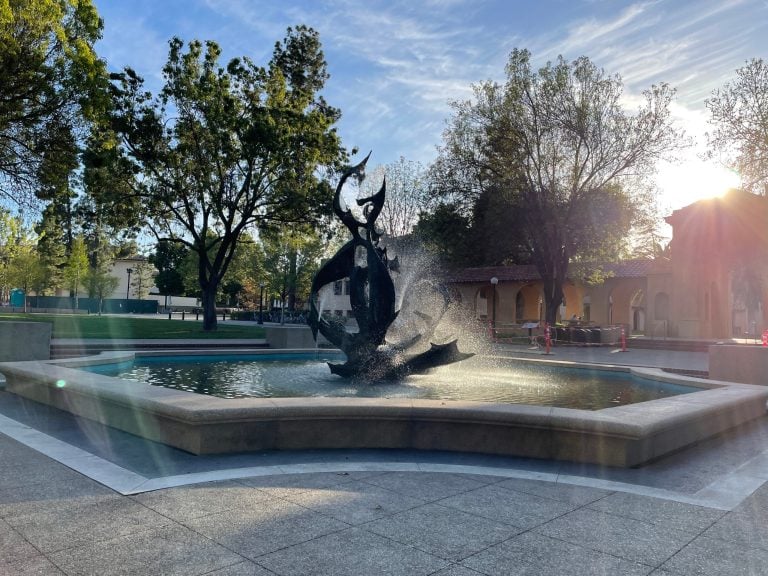On an ordinary summer day at Stanford, the sun beats down on the Farm, creating a hot and humid environment.
Many students turn to fountain hopping, a tradition of swimming, socializing and hopping between the University’s larger fountains to beat the heat. During summer quarter, however, many fountains are shut down to conduct maintenance on water quality and conservation.
Students received an email from the National Weather Service (NWS) about predicted heat waves throughout the summer. According to the NWS, temperatures in the U.S. reached record highs, including in the Northwest.
Without fountains and air conditioning in the dorms, how do students beat the heat? The Daily spoke with students about how they kept cool while living on campus over the summer.
Off-campus getaways
While trying to beat the heat, some students choose to look for cooler locations off campus.
This summer, Rachel Braswell ’24 has “gone to the movies a few times because those are normally pretty cold enough,” she said.
The movies are a “much more fun way to escape the heat without having to go all the way down to the beach,” Braswell said.

However, some students like James Collings ’24 prefer further getaways.
Whenever Collings receives a heat advisory email or weather warning from Stanford, he makes “plans to go down to San Francisco and escape to the heat,” he said.
“Usually, [San Francisco is] a drop of 20 plus degrees,” Collings said. “It’s funny because as you drive, you can just look at your thermometer on your car and see the temperature dropping every couple of miles.”
Odin Farkas ’26 prefers heading to the Garden of Eden, a state park and natural swimming hole in Santa Cruz, to cool off when he’s off campus.
“I love swimming there and being surrounded by the breathtaking nature,” Farkas said. “I really recommend visiting.”
Out with the fans, in with the AC
Although there are many air-conditioned locations around campus such as recreation centers, dining commons and other community spaces, most undergraduate students lack air conditioning (AC) in their own dorms.
“It can get really hot in the dorms, especially in spring quarter,” Amol Singh ’23 said. “Everyone just ends up having to buy fans for themselves and figure out some other way to keep their rooms cool.”
Over the summer, Braswell lived in Toyon Hall, which doesn’t have central AC, making it impossible to “escape from the heat when you’re in your dorm,” she said.
“The only option is a fountain if you’re just trying to relax, or going to one of the buildings that is air-conditioned, like the library,” Braswell said.
Computer clusters in student residences are the only source of air-conditioning provided for undergraduates. Collings said Stanford should invest in more cooling spaces on campus and add central AC to more common spaces because “computer clusters … can get quite packed.”
“I wish that there were more buildings on campus that were air-conditioned — some buildings have a larger computer cluster than others,” Collings said. “There’s all these people that gather in the computer cluster to escape [the heat]. I’ll have all my windows open and my fans going at night. It’s not cool enough just because there’s no AC.”
Just keep swimming
On-campus swimming pools can also provide an alternative for students unable to drive to the beach or go out of town.
One of the popular recreational pools open this summer is at the Arrillaga Center for Sports and Recreation (ACSR). Students can also use the Redwood City Recreation and Wellness Center rooftop pool, which is open Monday to Saturday.
Farkas said he enjoyed swimming at ACSR’s pool and playing pool basketball with friends.
“Other than escaping to San Francisco on the weekends, I swim almost every day,” Collings said. “That’s what I do for exercise, and that’s usually a nice way that I cool off.”
